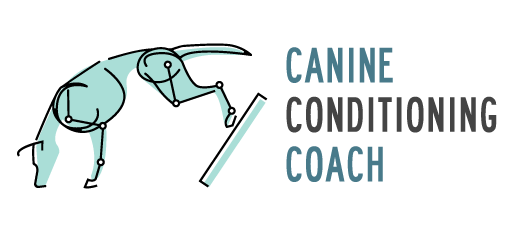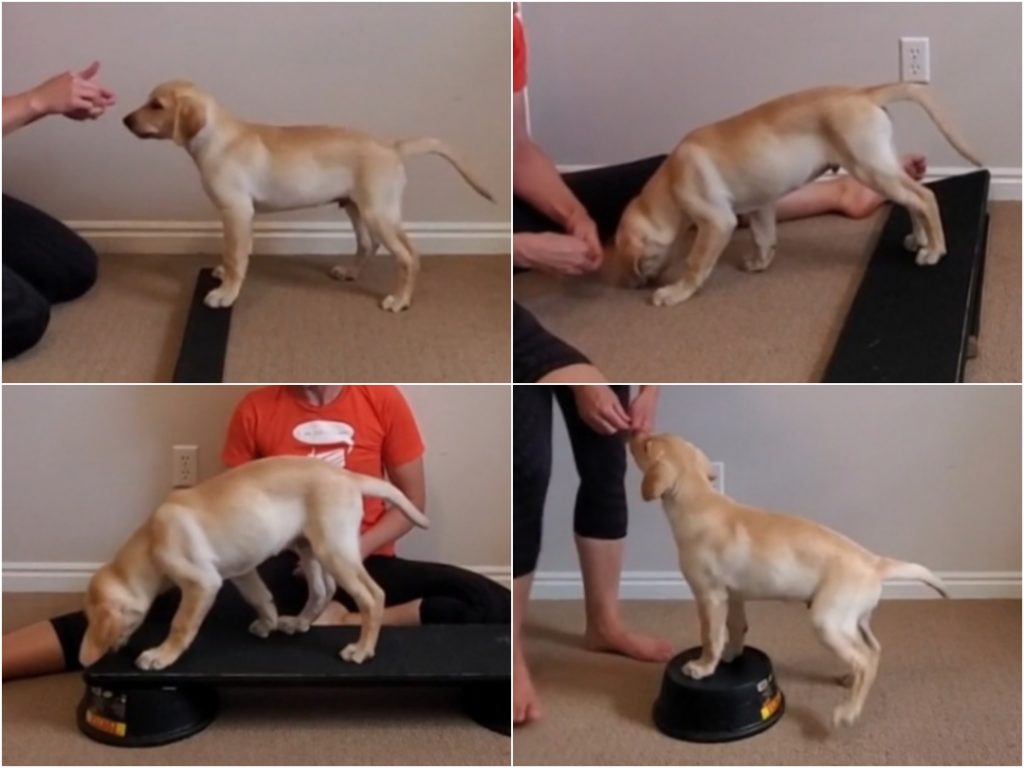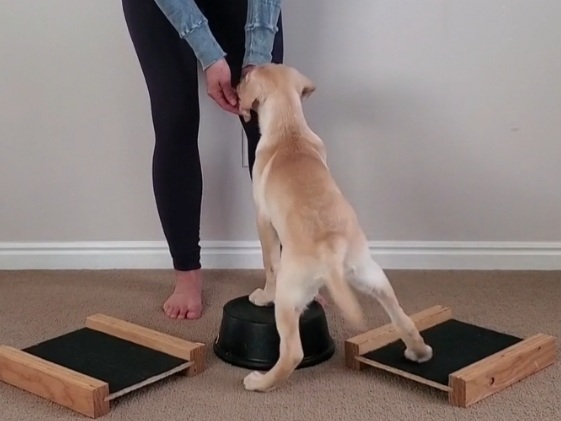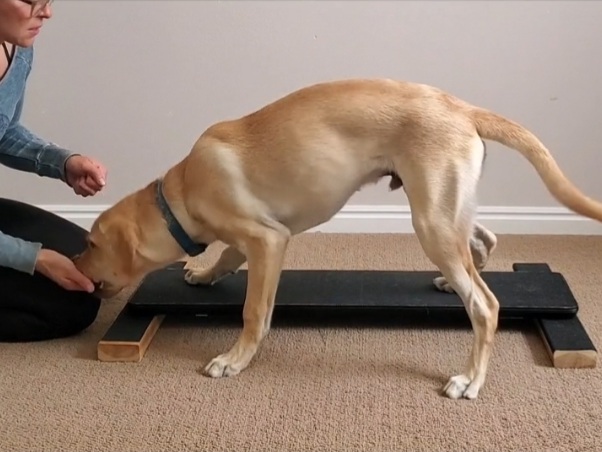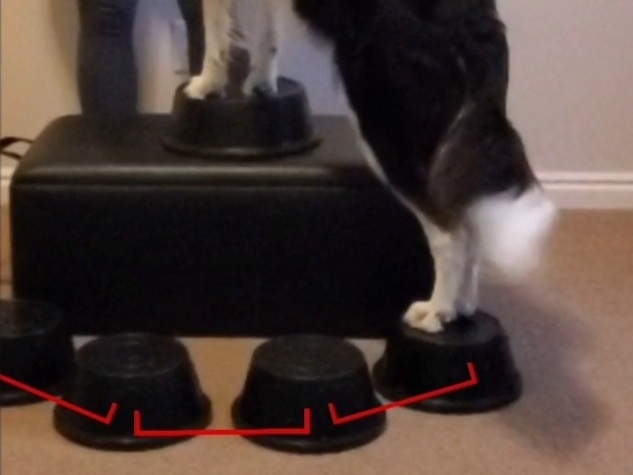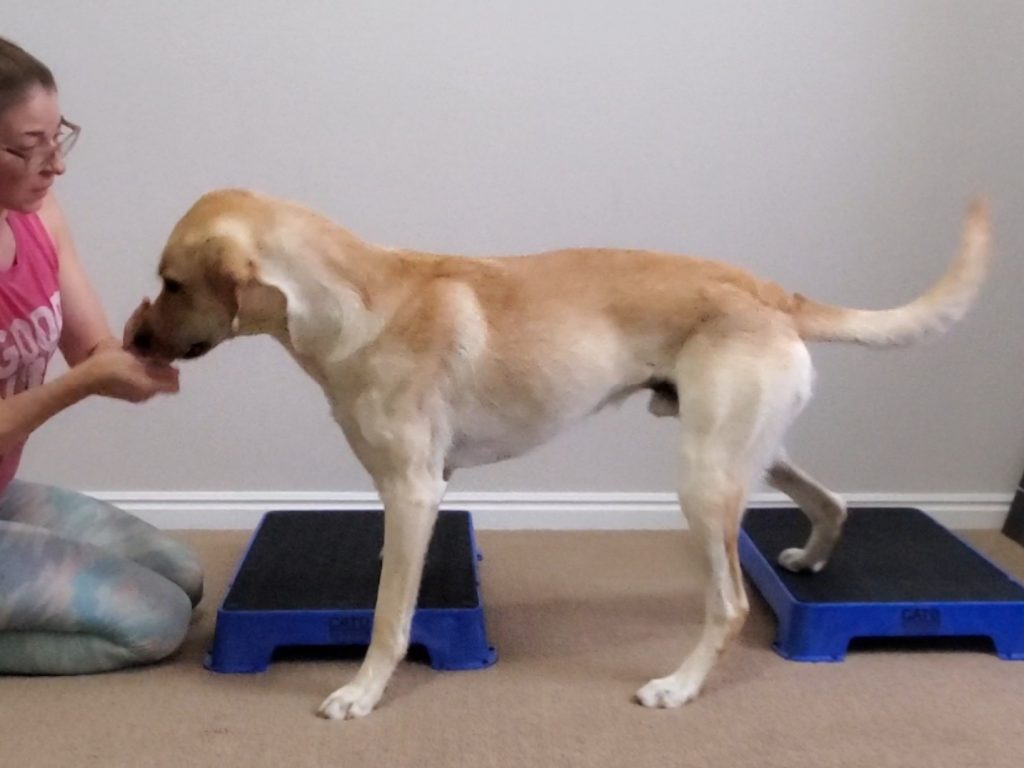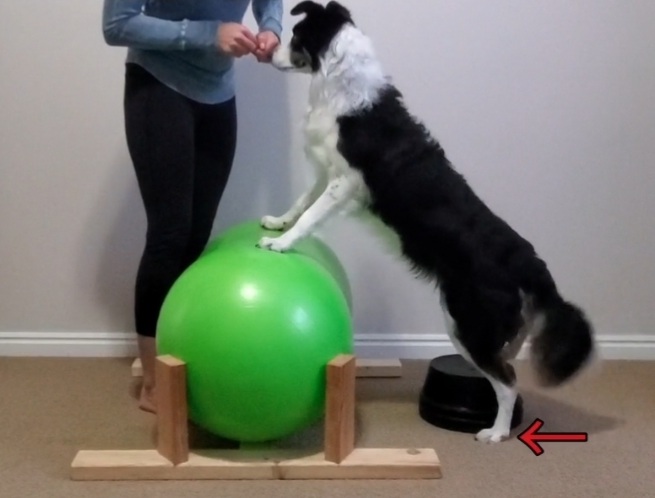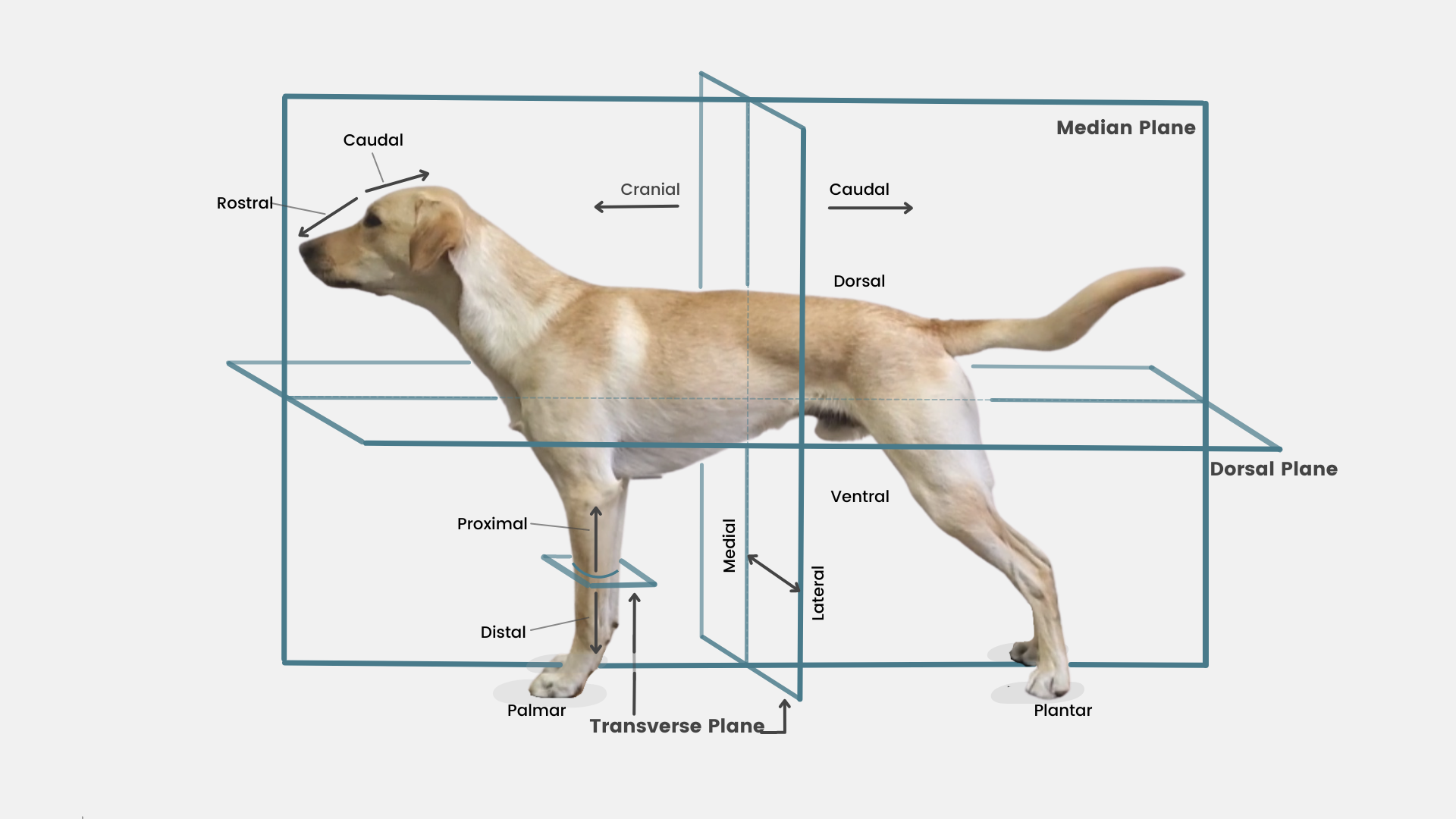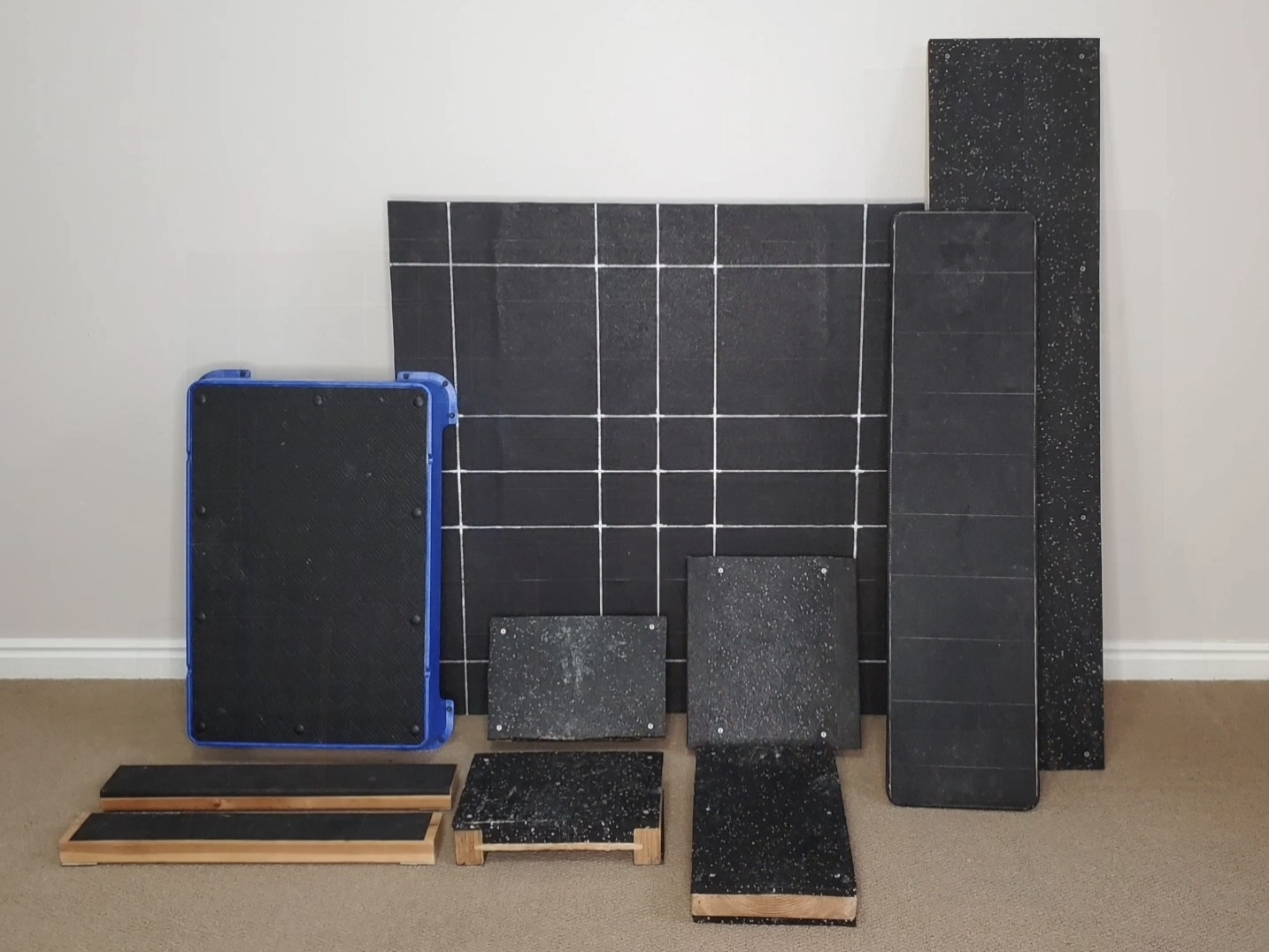Purpose: This exercise progresses the Pivot + Step Up: Beginner exercise by raising the height of the foot targets increasing both the physical challenge and the proprioceptive challenge.
Equipment: Plyo Box or other raised target, 2 rubber bowls or other similar Foot Targets
Targets: To break down “what this exercise does”, we have to look at the component pieces…
- Side Stepping/Pivot with front feet elevated works to strengthen the hip abductors/adductors with an increased load shifted to the rear. Along with the “working/moving muscles”, the abdominals/hip flexors and other “core” muscles must engage to maintain a neutral top line.
- Rear Foot Target works proprioception, and fine motor control.
- Side Step-Up works the stifle extensors… mainly the quads and distal hamstring concentrically. The hip stabilizers (glutes, hip rotators) also have to work to maintain a level pelvis against gravity during the step up.
- Side Step-Down is probably the most challenging and MOST IMPORTANT piece of the exercise. It works the quads and distal hamstring ECCENTRICALLY (the lengthening part of the contraction), which is where the strengthening of the muscle actually happens. Of course the hip stabilizers are also working to resist gravity and maintain a level pelvis.
Setup: Spacing between the props is critical in this exercise to increase the likelihood the dog will ascend and descend the rear foot target correctly (neutral spine, vertical hocks, and level pelvis).
- If the rear foot target is TOO CLOSE to the front foot target, the dog is likely to step behind the rear foot targets instead of onto the target itself. If the dog does manage to step onto the target, the hocks will be aligned in font of vertical, and/or the spine will be squished into flexion (rise through the lumbar/loin).
- If the rear foot target is TOO FAR AWAY from the front foot target, the dog is likely to step in front of the rear foot target instead of onto the target itself. If the dog does manage to step onto the target, the hocks will be aligned behind vertical, and/or the spine will be overly extended (dip behind the withers and into the lumbar/loin).
- If the rear foot target is TOO TALL, the dog will have to tilt the pelvis on the ascent and descent, which is not ideal, and does not promote proper muscle recruitment. An indication that the rear foot target is too high, is speed on the descent… where the dog is “falling” vs slowly lowering. The rear foot target should be just shorter than hock height.
NOTE: This graphic highlights the important positions we are trying to reward. The initial step down, both rear feet on the ground, and the initial step up.
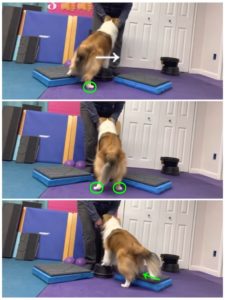
Rewarding in these 3 positions along the way to the final position builds value to each slow, controlled step, and helps combat the rushing that happens when the reward is only delivered in the final position. Special thanks to Candi & Charli for the image!
Watchpoints:
- Executing this movement quickly, will likely allow the dog to “cheat”… Strengthening the muscles that are already strong/dominant, and skipping the muscles that are weak/hypoactive… creating even more weakness, furthering muscle imbalance, and increasing the injury risk.
- Notice how I mark/reward each of the individual components. This produces a slow, controlled, intentional movement, as the dog is not rushing to the target to get the reward … But instead, receives a reward for each individual piece.
- We are looking for a slow, intentional, controlled movement in this exercise. Each pelvic limb should be lifted and placed in position, avoiding flailing or speed. When lowering down and stepping up we’re looking for vertical movement/amplitude change. Watch for the “step down” portion looking like the dog is falling or moving significantly to the side with speed. Hocks should remain vertical or close to vertical during the lifting/lowering phases.
